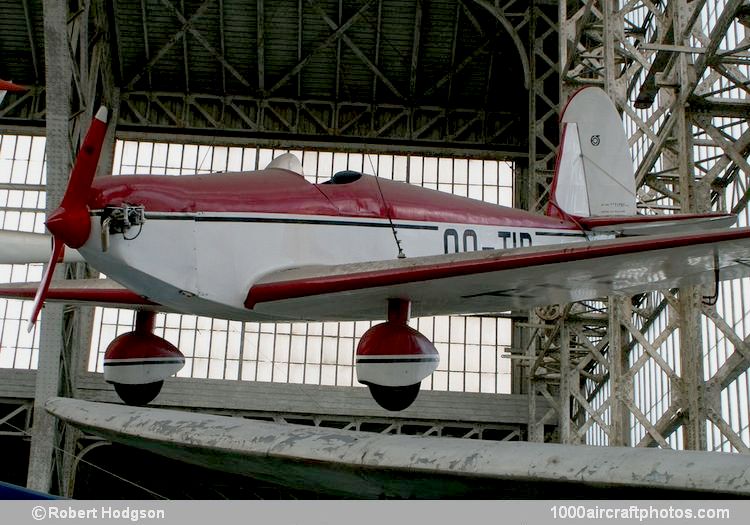12/15/2021. Remarks by Johan Visschedijk: "Fairey's principal subsidiary company, Avions Fairey in Belgium, later to become Fairey SA, was the result of Fairey Firefly and the Fox II orders for the Belgian AF. These orders were placed by the Belgian authorities in 1930 and 1931 respectively, on the understanding that aircraft in future orders should be assembled in Belgium. Work on a factory at Gosselies, near the mining center of Charleroi, was started in March 1931 and the Societe Anonyme Belge Avions Fairey was officially registered on September 12.
In charge of Avions Fairey was Ernest Oscar Tips, who joined Fairey in 1915 after escaping from Belgium when the Germans invaded the country in the 1914-18 war. He had, with his brother, designed and built a twin-propeller biplane in 1908, had obtained the agency in Belgium and Holland for the 50 hp Gnome rotary engine, and later designed and built rotary-valve aero-engines between 1912 and 1914, when he joined the Belgian AF. In England he was put in charge of the erecting department at Fairey's Hamble base and later travelled abroad for the company as well as acting as observer on test flights.
After Firefly and Fox production had got under way at Gosselies he found time to work on light aircraft of his own design. These advanced low-wing cantilever monoplanes with delightful handling characteristics were known throughout the pre- and post-WW II periods by the name Tipsy, which was first applied to the prototype single-seat S (for Sport) of 1934.
Unofficially registered OO-TIP the prototype Tipsy S (c/n 20) was flown to Britain in June 1935 by A.J. Eyskens, Chief Test Pilot of Avions Fairey, and made an immediately good impression, despite criticisms of control oversensitivity, a sharp stall and the marginal power provided by its 20 hp Douglas Sprite flat-twin engine. The Tipsy S received a British CofA on March 3, 1936.
This lack of adequate power, and the unavailability of any other suitable British engine, was probably the cause of the demise of the developed S.2 when this was built under license in Britain during 1937 by Aero Engines of Kingswood, Bristol, the makers of the Sprite. Only twenty S.2s were built in Belgium, the eighth was registered to E. Tips as OO-ASA (c/n 28) on October 27, 1936 was delivered in October 1936 as a 'model' and was British-registered G-AENF. Nine were built in the United Kingdom, but only six reached the sales agents, the Tipsy Aircraft Co. of Hanworth Aerodrome, Middlesex, and none appear to have survived for long.
A Belgian-built S.2 version with a Sarolea engine, registered to E. Tips as OO-ASJ (c/n 36) on February 17, 1938, was imported into the UK by Brian Allen Aviation of Feltham, Middlesex, and registered G-AFFN on March 8. 1938. The CAA cancelled the registration on December 1, 1946, however, some four years later, February 19, 1951, G-AFFN reappeared on the CAA register, registrant was Geoffrey A. Chamberlain of Hayes, Middlesex. Again the CAA cancelled the registration, this time on April 14, 1959.
Another Belgian S.2 was registered to E. Tips as OO-ASB (c/n 29) on April 7, 1937, the following day it as sold to the UK and registered as G-AFVH. July 28, 1948, it was registered to Fairey at Hayes, July 27, 1949, the registration was cancelled. The aircraft was returned to Belgium for preservation (pictured above) and had applied the unofficial registration OO-TIP of the Tipsy S prototype."
